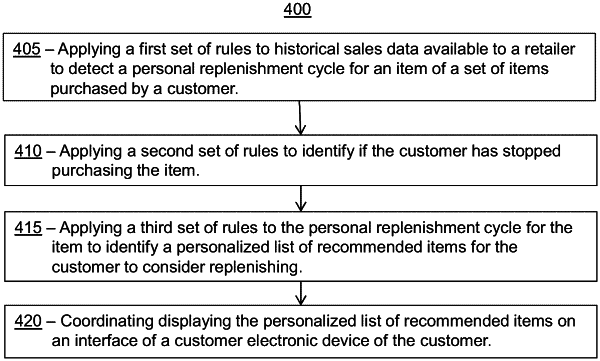| CPC G06Q 30/0631 (2013.01) [G06F 16/9535 (2019.01); G06F 16/955 (2019.01); G06Q 10/04 (2013.01); G06Q 10/087 (2013.01)] | 20 Claims |

|
11. A method being implemented via execution of computing instructions configured to run on one or more processors and stored one or more non-transitory computer-readable media, the method comprising:
coordinating displaying a personalized list of recommended items on a graphical user interface of a user device of a user, wherein the coordinating displaying occurs after:
determining a personal replenishment cycle for an item of a set of items previously purchased by the user by executing a first set of rules on historical sales data available to a retailer;
increasing available storage space in the one or more non-transitory computer-readable media of a system by removing a first item from the set of items based on executing a second set of rules to identify that the user has stopped purchasing the first item; and
increasing a network bandwidth of the system by reducing a number of database requests for the set of items previously purchased by the user based on executing a third set of rules on the personal replenishment cycle for the item, wherein the third set of rules comprises:
identifying an elapsed time since the user bought the item from the retailer;
estimating a number of times the user has replenished the item;
estimating a number of times the user has replenished remaining items of the set of items; and
determining a score for each remaining (user, item) pair comprising a respective user, item information.
|